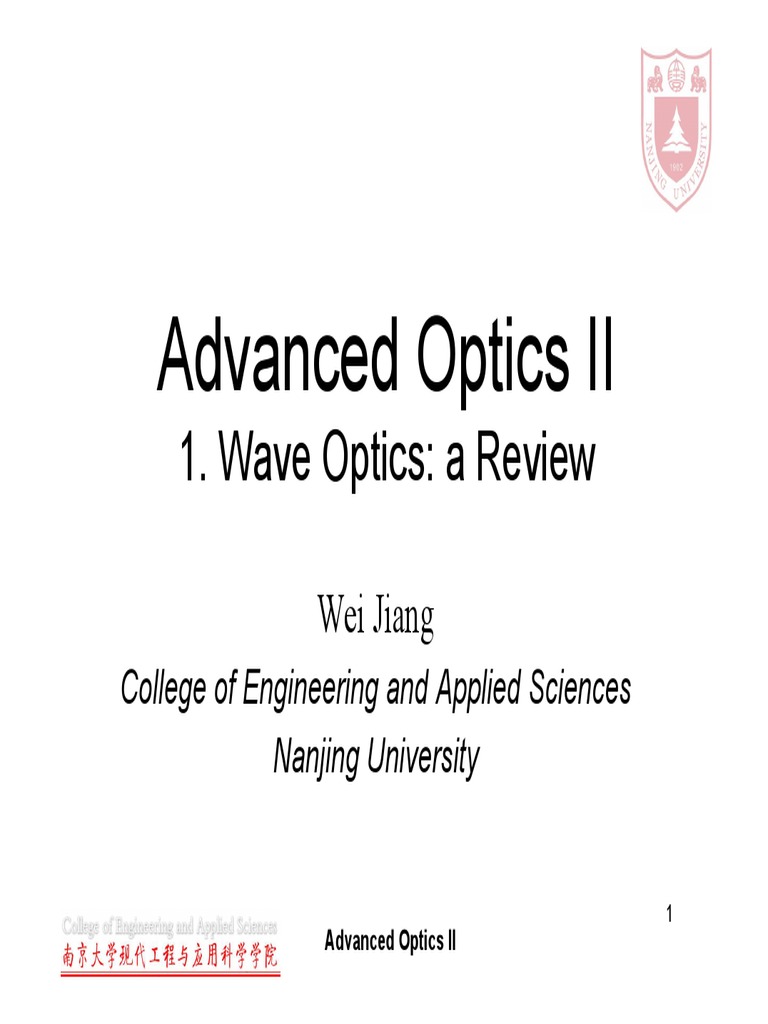In the realm of physics, students often grapple with the dichotomy between wave optics and electromagnetism (E&M). Each domain presents a formidable array of concepts and mathematical complexities that challenge even the most ardent learners. One might ponder: Is wave optics inherently easier to master than E&M? This question, seemingly straightforward, masquerades a labyrinth of comparative intricacies and cognitive demands. Both subjects possess unique characteristics that can either hinder or facilitate understanding, depending on the learner’s proclivities.
To unravel this inquiry, it is prudent to delineate the foundational principles of each discipline. Wave optics, in broad strokes, concerns the behavior of light as a wave phenomenon. This encompasses various phenomena such as diffraction, interference, and polarization. On the other hand, electromagnetism delves into the interwoven nature of electric and magnetic fields, governed by Maxwell’s equations, which form the bedrock of classical electrodynamics.
At first glance, wave optics may appear more approachable because it involves fewer abstract concepts compared to electromagnetism. A fundamental tenet of wave optics is the application of the wave equation, which preserves a type of simplicity. It can be physically visualized through phenomena such as Young’s double-slit experiment, where students can readily observe tangible evidence of wave behavior. The allure of observing a spectrum or the interplay of light and media can make wave optics feel more intuitive.
However, this perceived accessibility often belies the intricate mathematics underlying wave optics. While students may grasp the elementary notions of interference or diffraction, the complexity escalates quickly when dealing with rigorous calculations involving phase differences or path lengths. Mastery of Fourier analysis and understanding how wavefronts interact can elude many students. Thus, while the concepts may seem digestible at a cursory glance, the deeper layers of wave optics demand a robust mathematical framework and a comfort with abstract thought.
In contrast, electromagnetism deploys a far more rigorous mathematical apparatus encapsulated in Maxwell’s equations. These four equations—each a paragon of mathematical elegance—describe how electric and magnetic fields propagate and interact with matter. Understanding these equations requires a significant investment in vector calculus and differential equations. For students already averse to mathematics, the dense concentration of symbols and notation can be daunting, engendering a sense of trepidation. Nevertheless, once grasped, the solutions to these equations yield profound insight into the behavior of electromagnetic waves, circuit theory, and the very underpinnings of technology.
Moreover, the interplay of electric and magnetic fields in E&M establishes a holistic framework that is critical for understanding advanced topics such as electromagnetic radiation and quantum mechanics. The cohesive elegance of E&M provides a unified perspective that can be intellectually gratifying, even if the initial learning curve is steep. Once students ascend to a level of comprehension, the beauty of the interrelated physical phenomena becomes apparent.
A significant point of contention in this debate is the nature of visualization in each domain. Wave optics often allows for graphical representation of phenomena, where interference patterns and diffraction gratings can be depicted in ways that are visually stimulating. On the contrary, electromagnetism may manifest itself abstractly, with field lines representing electric and magnetic forces being more challenging to visualize. Such abstract representations may predispose students to disengagement, particularly in the earlier stages of exposure. This can be compounded by the lack of immediate tactile or visual feedback, making it more difficult for learners to contextualize abstract principles.
Additionally, pedagogical approaches can vary significantly when approaching each subject. Wave optics is often introduced through experimental setups, fostering a hands-on learning environment. In contrast, E&M may be more lecture-oriented, focusing heavily on theoretical derivation before encouraging practical application. This disparity can shape student perceptions of difficulty, as interactive learning modalities often engender better engagement. The intrinsic motivation derived from experimental work may make wave optics feel less intimidating and more enjoyable.
Nonetheless, it is imperative not to discount the difficulties associated with wave optics. Topics such as coherence, the mathematics of Fourier optics, and the implications of phase shifts present challenges that can rival those encountered in E&M. Furthermore, as one progresses toward advanced studies, the journey through quantum optics can reveal profound complexities associated with wave-particle duality, further complicating the comparison.
Ultimately, the question of whether wave optics is easier than electromagnetism hinges on individual preferences and strengths. Some students may flourish within the empirical and visual framework of wave optics, while others may revel in the elegance and comprehensive nature of electromagnetic theory. This divergence poses an intriguing challenge: The path of understanding is a deeply personal journey characterized by intrinsic interests, learning styles, and cognitive affinities.
In conclusion, while wave optics may present an initial allure of accessibility, both fields possess unique complexities demanding rigorous comprehension. E&M, with its mathematical rigor and comprehensive nature, stands as a titan of classical physics, while wave optics offers tantalizing visual experiences. The comparative ease of each subject is ultimately a subjective landscape shaped by individual learning modalities and intellectual curiosity. Therefore, rather than framing the discussion as a binary choice, it may be more fruitful to embrace the multifaceted nature of each subject, recognizing that both wave optics and electromagnetism contribute significantly to the rich tapestry of understanding in the physical sciences.












